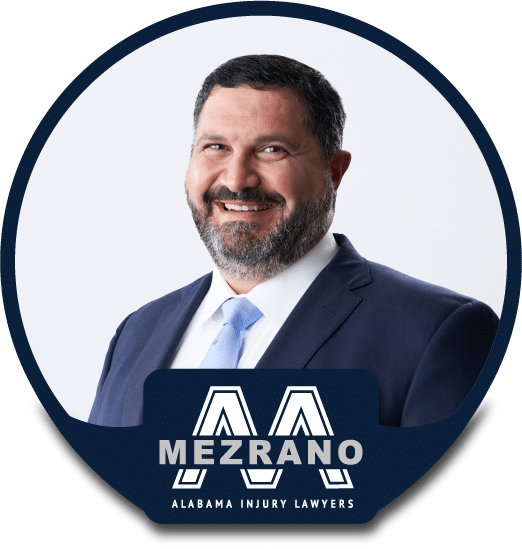Can a Nursing Home Take Your House if it is in a Trust?
Last updated Sunday, February 4th, 2024

Facing the reality of long-term care needs, a critical question looms: can a nursing home take your house if it is in a trust? This pressing concern gets to the heart of asset protection strategy. This article cuts through the complexity, offering clarity on whether your trust can shield your home from nursing home claims—preparing you for informed decisions about your estate.
Key Takeaways
- Irrevocable trusts provide stronger asset protection against nursing home costs compared to revocable trusts, as assets in an irrevocable trust are not considered owned by the individual for Medicaid eligibility.
- Nursing homes cannot claim a house placed in an irrevocable trust, as such assets are protected from nursing home claims and not considered part of the probate estate after the owner’s death.
- To be effective in asset protection, trusts must be established in compliance with state-specific Medicaid laws and regulations, and it is crucial to engage in Medicaid planning with the help of an elder law attorney well before the Medicaid look-back period.
Get Your FREE Case Review Today
Contact us today and we will help you get the compensation that you deserve.
or Send Us Your Case DetailsGet Your FREE Case Review Today
Contact us today and we will help you get the compensation that you deserve.
or Send Us Your Case DetailsTrust Fundamentals and Nursing Home Considerations
Trusts are a vital tool in protecting assets from nursing home costs. However, not all trusts are created equal. The degree of protection they offer varies greatly depending on their nature. Specifically, irrevocable trusts often offer more protection than revocable trusts, given that the grantor relinquishes control over the assets within the trust. But what does this mean in practice? How do these trusts interact with asset assessment when it comes to nursing home expenses? Let’s delve further into these trust fundamentals.
To understand trusts, it’s important to familiarize yourself with their types – the revocable and the irrevocable. These types differ in their function, flexibility, and most crucially, their impact on asset protection from nursing home costs. To fully appreciate their respective roles in asset protection, we must break them down further.
Defining Revocable Trusts

- Modify or dissolve the trust at will
- Adjust the beneficiaries
- Include or remove assets from the trust
- Update instructions for the distribution of these assets
But, the flexibility that makes revocable trusts appealing simultaneously diminishes their ability to safeguard assets from nursing home expenses. Since the grantor retains control over the assets, they are not shielded from being utilized to cover nursing home costs. In contrast, irrevocable trusts, such as Medicaid Asset Protection Trusts (MAPTs), relinquish the grantor’s control over the assets, potentially meeting Medicaid’s requirements for non-countable assets.
The Nature of Irrevocable Trusts
Once established, an irrevocable trust is a legal agreement that cannot be altered or terminated. This means that once assets are transferred into the trust, the grantor no longer has control over them. Instead, the ownership of these assets effectively belongs to the trust itself.
The inability to alter or dissolve an irrevocable trust may seem restrictive, but it is precisely this characteristic that serves to:
- Protect assets from being counted towards Medicaid eligibility
- Shield assets from Medicaid’s estate recovery and the probate process
- Preserve wealth for heirs
However, this protection comes with a stipulation known as the Medicaid look-back rule, which mandates that asset transfers into an irrevocable trust must occur more than five years prior to Medicaid application.
How Trusts Interact with Asset Assessment
The type of trust you establish significantly influences how assets are assessed for determining Medicaid eligibility. For example, assets held in a revocable trust are still considered owned by the individual. Therefore, Medicaid counts these assets when determining eligibility for long-term care benefits, which can include nursing home care costs.
In contrast, assets transferred into an irrevocable trust are no longer considered owned by the individual. This renders them non-countable for Medicaid purposes and protects them from Medicaid estate recovery. However, it’s worth noting that transferring assets into an irrevocable trust must occur more than five years before applying for Medicaid. This is due to the Medicaid look-back period, which prevents penalties and ensures that the assets don’t affect Medicaid eligibility.
Can a Nursing Home Claim Your House in a Trust?
After gaining an understanding of revocable and irrevocable trusts, you’re likely wondering: Can a nursing home still claim your house if it’s in a trust? The answer largely depends on the type of trust in which your home is placed.
Generally, nursing homes cannot claim a house that’s in an irrevocable trust. This is because assets held in such a trust are protected from nursing home claims. After the death of the trust owner or spouse, assets within an irrevocable trust are not considered part of the probated estate and are shielded from Medicaid recovery efforts.
Trust Type and Nursing Home Claims
The type of trust you opt for has a significant influence on the potential for a nursing home to claim your assets. For instance, assets placed in a revocable trust are not shielded from nursing home claims. This is because the grantor retains access and control over these assets, as discussed earlier.
In contrast, an irrevocable trust takes assets out of the individual’s estate, which can protect them from nursing home costs and help meet Medicaid eligibility for asset protection. However, it’s important to remember that while assets in a Medicaid Asset Protection Trust may be exempt from being counted by Medicaid, the income they generate could still influence eligibility for Medicaid income limits.
State Law Variations and Their Impact
Apart from grasping the fundamental principles of trusts, it is equally vital to acknowledge that state-specific laws and regulations significantly influence the protection of trust assets from nursing home costs. That means Medicaid planning strategies, including the establishment of irrevocable trusts, must comply with complex and diverse rules specific to each state.
For instance, states have varying home equity limits for Medicaid eligibility. These limits affect the decision to place homes in trusts, with limits ranging from $688,000 to $1,033,000 in 2023. Understanding and navigating these state-specific rules is crucial for effective Medicaid planning and for protecting assets, such as your home, from nursing home claims.
Protecting Your Home: Trust Strategies and Medicaid Planning
Trust strategies coupled with Medicaid planning can significantly contribute to safeguarding your home from nursing home costs. By implementing these strategies correctly and in a timely manner, you can safeguard your home while also ensuring you meet Medicaid eligibility requirements.
A Medicaid Asset Protection Trust (MAPT) can protect assets like your family home from Medicaid’s estate recovery, estate tax, and the probate process. However, to ensure these protections are effective, you must pay attention to the timing of asset transfers, the type of trust you select, and the need for professional legal consultation.
Timing and the Look-Back Period
The timing of transferring assets to a trust is crucial due to what’s known as the Medicaid look-back period. This period is a 60-month window (or 30 months in California) during which financial transactions and asset transfers are closely scrutinized by Medicaid. This scrutiny aims to identify transfers made at below fair market value.
So, why does this matter? If you move assets into a trust less than five years before applying for Medicaid, you may face penalties and delayed eligibility. Therefore, setting up a Medicaid Asset Protection Trust (MAPT) outside the look-back period can play a crucial role in protecting assets from nursing home costs.
Selecting the Right Trust for Your Home
Selecting the right trust for your home is a critical step in asset protection. There are several factors to consider. For instance, a revocable trust allows for adjustments to beneficiaries, included assets, and directions for the distribution of these assets.
In contrast, irrevocable trusts established after 1993, where the trustee does not have discretion to distribute assets to the beneficiary, can offer asset protection from being counted by Medicaid. But before setting up an irrevocable Medicaid Asset Protection Trust, it’s important to consider how it impacts Medicaid eligibility and control over assets.
Consulting with an Elder Law Attorney
Given the complexity and the state-specific nature of Medicaid rules, setting up a Medicaid Asset Protection Trust (MAPT) should be done with the help of an attorney who is familiar with these laws. An elder law attorney can help navigate the complex process of creating a MAPT, considering the legal fees and potential effects on the quality and choice of care.
Additionally, a financial advisor can assist individuals in planning for future healthcare expenses and evaluating the suitability of long-term care insurance. This collaborative approach ensures a balance between asset protection and access to medical care, allowing for Medicaid qualification while protecting assets through medicaid assistance.
Alternatives to Trusts for Protecting Your Home
Even though trusts serve as a potent tool for asset protection, other strategies are also available. There are alternatives to trusts that can serve to protect your home from nursing home costs. These include life estates and long-term care insurance, each with its own unique benefits and considerations.
With a life estate, you can transfer property ownership and still have the right to live there for the rest of your life. This arrangement ensures that you can enjoy the property while also passing it on to someone else. This arrangement can protect a property from financial penalties related to nursing home care. On the other hand, long-term care insurance is a policy that covers various types of care, including home care, nursing home care, or care in an assisted living facility.
Life Estates and Retained Control
A life estate is a legal arrangement that allows you to retain the right to live in your property for your lifetime, even though the ownership of the property is transferred to someone else. This arrangement can protect the property from being subjected to financial penalties related to nursing home care within five years of transferring the property.
Moreover, a life estate offers tax benefits to the remaindermen, the individuals who will own the property after your death. For instance, it grants a ‘stepped-up’ basis, which can reduce capital gains tax liabilities if they sell the property.
Leveraging Long-Term Care Insurance
Long-term care insurance can be a viable alternative to trusts for protecting your home. This type of insurance provides an additional source of funding for nursing home care, reducing the need to use personal assets and offering more financial independence.
Qualifying for long-term care insurance provides policyholders with:
- More financial independence than Medicaid benefits
- The ability to keep their assets while still receiving help with nursing home costs
- The opportunity to allocate the money saved towards other important expenses or preserve it for legacy purposes.
Real-Life Implications for Families and Future Generations
The strategies and considerations explored so far bear real-world consequences for families and ensuing generations. After all, the purpose of asset protection is not just to secure one’s financial future but also to ensure a smooth transition of assets and maintain financial stability for the next generation.
This journey towards asset protection involves:
- Navigating caregiving responsibilities and legal preparations
- Ensuring accessibility to legal documents and contact information for relevant professionals
- Engaging in family discussions about long-term care, which can be challenging due to the sensitive nature of the topic.
Preserving Family Assets

- Diversification of investments
- Setting up asset protection trusts
- Creating a comprehensive estate plan
- Obtaining adequate insurance coverage
These strategies aim to reduce susceptibility to financial instability and facilitate the passing of wealth to the next generation. Moreover, consulting with an elder law attorney for estate planning allows individuals to control the distribution of their assets after death, ensuring their wishes are respected through:
- wills
- trusts
- powers of attorney
- advanced healthcare directives
Balancing Immediate Needs with Long-Term Goals
While anticipating future needs and planning for long-term goals is vital, addressing immediate needs is equally important. This balance can be challenging to maintain and often requires professional advice and early discussions about long-term care.
Seeking professional advice from elder law attorneys and financial advisors can align wealth preservation strategies with both immediate needs, such as nursing home costs, and long-term goals like leaving a legacy. Moreover, educating family members about financial responsibility and effective wealth management can ensure a smooth transition of assets to the next generation.
Financial and Emotional Considerations in Asset Protection
Even though the emphasis in asset protection is often on financial aspects, the emotional elements are just as significant. After all, asset protection involves planning for potential nursing home costs, a scenario that carries both financial and emotional implications.
Ensuring a comprehensive wealth management strategy that focuses on wealth preservation is crucial for securing asset protection during an individual’s lifetime and facilitating a seamless transfer of those assets to beneficiaries. However, the prospect of asset depletion due to long-term care costs can lead to emotional stress for individuals and their families.
Understanding the Financial Landscape
Comprehending the financial landscape of long-term care costs is vital for successful asset protection. These costs, especially for prolonged nursing home care, can significantly deplete retirement savings and pose a threat to the inheritance left for beneficiaries.
Elderly individuals, particularly those in the middle class, may face severe financial hardship when faced with extended nursing home care costs. This financial strain is compounded for elderly persons with chronic conditions, as they also need to cover expenses for acute medical care. Therefore, decisions made earlier in life, such as acquiring long-term care insurance, are crucial in managing the financial situation and implications of long-term care.
Navigating Emotional Challenges
Dealing with the emotional challenges linked to long-term care planning is an essential part of asset protection. Individuals may experience a loss of dignity or control over their lives when spending down to Medicaid eligibility, leading to emotional challenges. Engaging in early discussions about long-term care while still healthy can alleviate some emotional stress related to uncertainty about the future.
Setting clear expectations for long-term care conversations can help families navigate the emotional complexities of planning for potential caregiving needs.
Frequently Asked Questions
What is the 5-year rule for trusts?
The 5-year rule for trusts states that assets placed in a Legacy Trust become exempt from Medicaid spend down requirements after a 5 year look back period. This means that for five years before applying for Medicaid, an individual cannot give away assets to become eligible for benefits.
What are the disadvantages of putting your house in a trust?
Placing your house in a trust can involve extra paperwork and the potential for your assets not to be fully protected from creditors. Additionally, there may be potential tax burdens to consider. Therefore, careful consideration is needed before making this decision.
How do you protect assets in a trust?
To protect assets in a trust, consider establishing an Asset Protection Trust (APT) that severs your connection to the assets, providing no control for their use or distribution. Additionally, an irrevocable trust offers the most protection from creditors and lawsuits by removing the assets from your ownership.
Does an irrevocable trust protect assets from a lawsuit?
Yes, an irrevocable trust can protect assets from a lawsuit because it cannot be revoked or changed by the grantor, making it difficult for creditors to access the assets. It must be presently funded to provide protection.
What is the difference between a revocable and irrevocable trust?
A revocable trust provides flexibility and control over assets but may not offer protection from nursing home expenses, while an irrevocable trust does not allow the grantor to retain control over the assets, offering protection from Medicaid’s estate recovery and the probate process.






